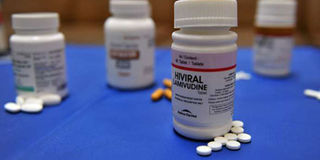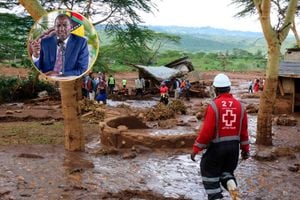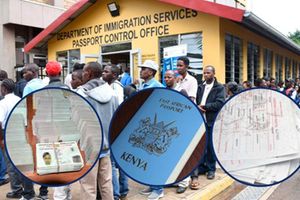WHO guidelines on HIV treatment good news for Kenya

Antiretroviral (ARV) medicine is displayed at a government hospital specialising in HIV/AIDS, in Jakarta on November 30, 2010. PHOTO | FILE
What you need to know:
- Indeed UNAIDS estimates expanding ART to all people living with HIV and expanding prevention choices can help avert 21 million AIDS-related deaths and 28 million new infections by 2030 globally.
- The existing stigma towards HIV-infected persons and the culture of people seeking healthcare only when they ‘feel sick’ may also complicate access provision.
- Substantial risk has been defined by WHO to mean living in a community whose number of new HIV infection cases per year is 3 per cent or more
The World Health Organization’s (WHO) new guidance on when to start antiretroviral therapy (ART) among people living with HIV and on pre-exposure prophylaxis (PrEP) for HIV should be received as good news by the world and a step closer towards closing the tap of the HIV epidemic.
The guideline recommends initiation of ART in adults living with HIV, regardless of CD4 cell count, and offer of PrEP as a prevention option to all people at increased risk of acquiring HIV.
Considering that the most at risk populations account for more than 100,000 (more than a third of all) new HIV infection in Kenya, this is indeed good news.
Adoption and implementation of this new guideline in Kenya would mean abandoning the partial or piecemeal use of antiretroviral medicines in favour of full access for all people living with HIV.
Both science and conscience demand that these recommendations be operationalised as quickly as possible. With such bold recommendation the potential exists to not only ease ART access among people living with HIV in Kenya, but also significantly alter how HIV prevention among the most at risk populations will be approached.
Efforts must now be consolidated to ensure these guidelines find their way into national HIV strategic plans. It is very important that these new guidelines be operationalised and adopted as soon as possible if we are to achieve the UNAIDS target of zero new HIV infections by 2030.
Indeed UNAIDS estimates expanding ART to all people living with HIV and expanding prevention choices can help avert 21 million AIDS-related deaths and 28 million new infections by 2030 globally.
Implementing these guidelines will require funds and serious logistical planning to ensure that every person living with HIV for instance can access these drugs.
In the Kenyan setup, pre-exposure prophylaxis, or the use of ARVs to prevent HIV infection, is a novel idea, and more awareness about how it works is therefore needed.
Existing stigma towards HIV-infected persons and the culture of people seeking healthcare only when they ‘feel sick’ may also complicate access provision.
To succeed, like in any other health programme, good systems that enable collection, storage and analysis of program data to inform program improvements will be necessary.
WHO recognizes that “implementation of the guideline needs to be accompanied by efforts to promote and protect the human rights of people in need of HIV services, including by ensuring informed consent, preventing stigma and discrimination in the provision of services and promoting gender equity.”
This will be music to the ears of vulnerable populations who are at a higher risk of HIV acquisition but, who have for a long time, been marginalised in the access and utilisation of HIV prevention, care and treatment services.
Substantial risk has been defined by WHO to mean living in a community whose number of new HIV infection cases per year is 3 per cent or more. Examples of people at substantial risk include men who have sex with men, discordant couples, sex workers, prisoners and adolescent girls.
These groups have indeed sometimes been referred to as keep population or vulnerable population or most at risk populations in the HIV fight against HIV.
Indeed the WHO estimates that if implemented, testing and treat would see a 35 per cent increment in the number of people living with HIV eligible for treatment.
In Kenya currently, it is estimated that more than 900,000 people living with HIV are on antiretroviral therapy. Implementation of this new guidance would see the gap and need for this therapy reduce with more than 1.2 million of the more than 1.4 million people living with HIV expected to receive the antiretroviral therapy.
The only bottleneck envisaged by the WHO in the operationalisation and implementation of the guideline is the knowledge gap in the provision of ART on testing.
Previously this was based on CD4 cell levels, which still have an important role to play in many other contexts.
One can only hope that this will lay ground for even more HIV preventive approaches such as vaginal rings currently being investigated finally getting adopted for HIV prevention.
Solomon Omariba is a Knowledge Translation Officer with the African Institute for Development Policy (AFIDEP). ([email protected])




